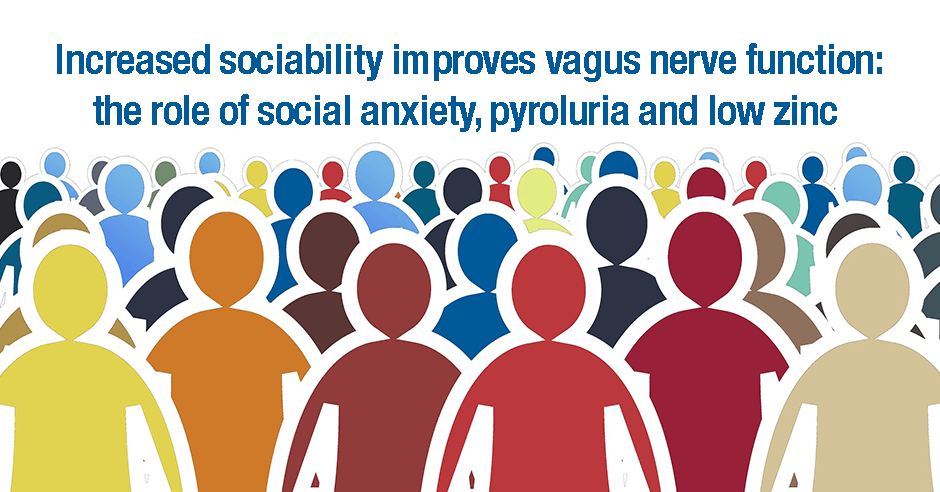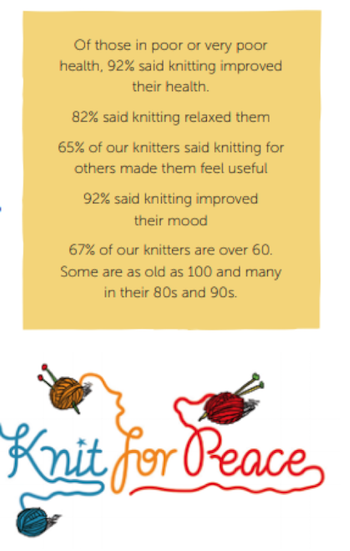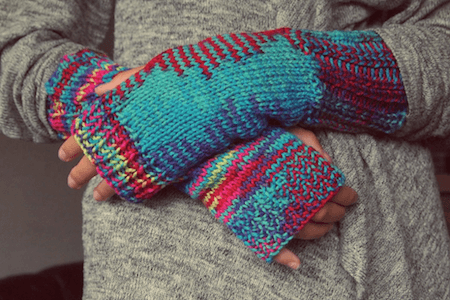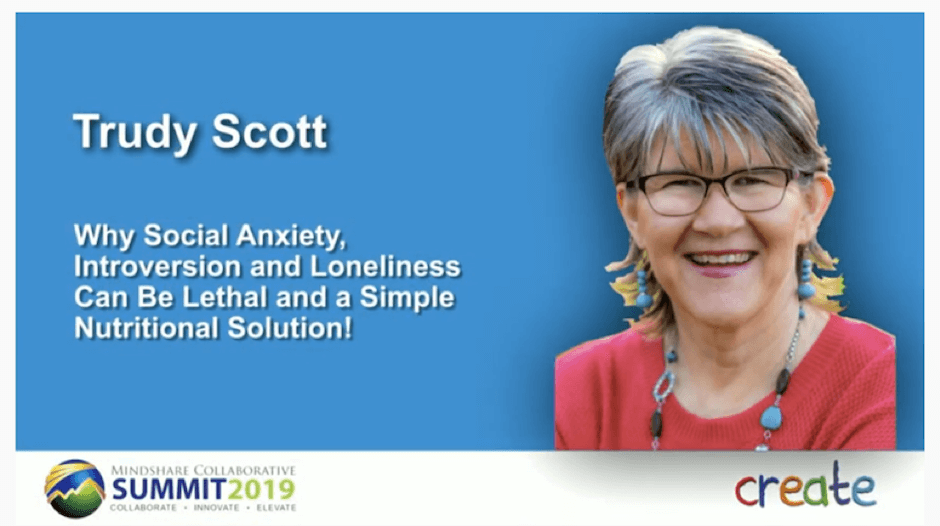
It was an honor to be selected as one of fifteen participants for The Future of Health presentations at Mindshare in August 2019. I presented this to my peers in the integrative health and nutrition space but it’s applicable to everyone and I’d like to share it with you today.
Here is my video presentation: Why social anxiety, introversion and loneliness can be lethal and a simple nutritional solution (click below to watch the video)
Here are some additional reading resources on much of what I cover in my 5 minute presentation:
- Pyroluria is a social anxiety condition that is not well recognized in the medical community. It responds really well to a few key nutrients, with zinc and vitamin B6 forming the foundation. I cover this in this blog post: Pyroluria, high mauve, pyrrole disorder, malvaria, elevated kryptopyrroles and social anxiety.
- Here is a link to the Pyroluria Questionnaire from my book The Antianxiety Food Solution (which has an entire chapter on the topic). I created this questionnaire using the work of Carl Pfeiffer and Joan Mathews-Larson, modifying it based on feedback I receive from my clients.
- I discuss how I first discovered the pyroluria-introversion connection here – Am I an anxious introvert because of low zinc and vitamin B6? My response to Huffington Post blog. I wrote this in response to the Huffington Post article, “23 Signs You’re Secretly An Introvert”, by Carolyn Gregoire.
- Here is the webmd loneliness article with this quote: “Loneliness has the same impact on mortality as smoking 15 cigarettes a day, making it even more dangerous than obesity” ~ Douglas Nemecek, MD, chief medical officer for behavioral health, Cigna
- And this loneliness paper, Loneliness and Social Isolation as Risk Factors for Mortality: A Meta-Analytic Review
- In this blog I write about how Increased sociability improves vagus nerve function: the role of social anxiety, pyroluria and low zinc
This is the the amazing and inspiring group of speakers who I shared the stage with:
- Amie Apigan – Why Attachment is the New Field of Medicine
- Lauryn Lax – Eating Healthy is Killing You
- Jess Sherman – Raising Resilient Kids in a Complex World: Will we Rise to the Challenge
- Terry Wahls – Creating an Epidemic of Health – My Radical Path
- Susanne Bennett – The Kimchi Revolution: How an Ancient Food Can Transform the Future of Health
- Razi Berry – Love is Medicine
- Kaylea Boutwell – I’ve Got Your Back: Novel Pain Therapies Transforming Spinal Care Outcomes
- Dana Cohen – Hydration: 8 Glasses a Day is not the Way!
- Elisa Song – Breathing Life into Your Kids
- Joel Sprechman – Creating 1M Super Poopers & Evolving Crohn’s Colitis
- Katy Kimball – My Plan to Empty Your Waiting Rooms (the Real Root Cause of Poor Health)
- Heather Paulson – Why Choose? Using the Best of Both Worlds to Experience Health with Cancer
- James Maskell – Group Visits: How Functional Medicine Reaches the Vulnerable
- Mehgan Walker – Life, Liberty and the Pursuit of Chronic Disease: Why Chasing Happiness is Making us Sick
(do let me know if you’d like me to share any of these presentations in the follow-up blog)
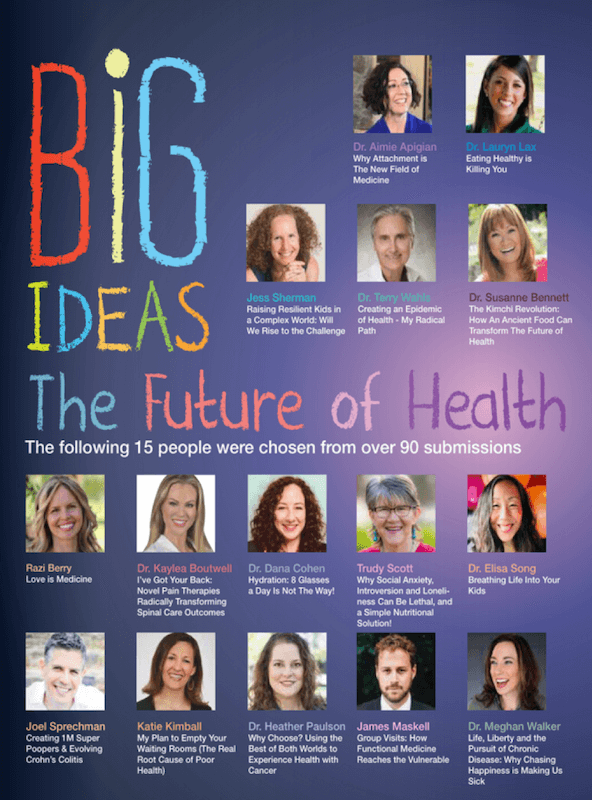

We each had a maximum of 5 minutes to present and were not allowed slides or notes. The last time I had memorized my talks and had them timed was 15 years ago when I was in Toastmasters. Before that it was when I was in school. I wasn’t even sure if I could do it when I entered my proposal to speak. When practicing the day before I was still unsure I could manage. Because of my Lyme disease, my memory and word recall isn’t as great as it used to be.
If you pay close attention and you’ll notice the spot where I almost freeze – everything just went out of my head! I simply breathed in calmly, made an attempt to look like I had paused and was fortunate that most of the ending came back to me! Whew!

I’d love to hear what you think of my message and if it resonates with you or a loved one. Feel free to share your pyroluria score and how you score on the introvert questionnaire.
Please also share if you’ve seen the benefits of no social anxiety, introversion and/or loneliness (or much less) when on the pyroluria protocol.
